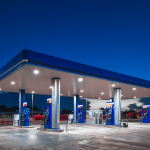Choosing the right storage drives for your Network Attached Storage (NAS) system can mean the difference between seamless performance and frustrating bottlenecks. Whether you’re storing family photos, running a media server, or managing business-critical data, the eternal debate between SSDs (Solid-State Drives) and HDDs (Hard Disk Drives) remains central to optimizing your setup. Let’s break down their strengths, weaknesses, and ideal use cases to help you make an informed decision.
Understanding SSDs and HDDs in NAS Storage
HDDs: The Workhorse of Bulk Storage
HDDs rely on spinning magnetic platters and mechanical read/write heads, a design that’s been refined over decades. They’re the go-to for users prioritizing high-capacity, low-cost storage:
· Pros:
o Affordable: ~$20–30 per TB, ideal for large media libraries.
o High Capacity: Up to 22 TB per drive (e.g., Seagate IronWolf Pro).
o Proven Longevity: Suitable for archival storage with proper maintenance.
· Cons:
o Slower Speeds: 100–200 MB/s sequential read/write speeds.
o Higher Power Use: 6–10W per drive, generating heat and noise.
o Mechanical Fragility: Vulnerable to vibration and physical shocks.
SSDs: Speed Demons for Demanding Workloads
SSDs use flash memory with no moving parts, making them ideal for performance-intensive NAS tasks:
· Pros:
o Blazing Speeds: SATA SSDs hit 550 MB/s, while NVMe drives exceed 3,500 MB/s.
o Energy Efficiency: 2–4W power draw, silent operation.
o Durability: Resistant to vibration, ideal for multi-drive NAS setups.
· Cons:
o Higher Cost: ~$80–150 per TB.
o Write Endurance: Limited TBW (Terabytes Written), though modern SSDs last years under typical use.
Key Factors to Consider for NAS
Performance: Speed Matters
SSDs dominate in scenarios requiring rapid data access:
· Random I/O Performance: SSDs handle 100K+ IOPS vs. HDDs’ ~100 IOPS.
· Multi-User Access: SSDs reduce latency for teams accessing files simultaneously.
· RAID Rebuild Times: SSDs rebuild RAID arrays 5–10x faster than HDDs.
Example: A video editing team sharing 4K files via NAS would benefit from SSDs’ near-instant project load times.
Reliability & Lifespan
· HDDs: Average 2–5% annual failure rate (Backblaze data). Risk increases in multi-drive setups due to vibration.
· SSDs: No mechanical parts, but wear out after ~600–3,500 TBW (varies by model). Most consumer SSDs last 5+ years.
Verdict: SSDs win for durability in active environments, while HDDs suffice for cold storage.
Cost: Budget vs. Performance
| Drive Type | Cost per TB | Best For |
| HDD | $20–30 | Bulk storage, backups |
| SATA SSD | $80–100 | Frequent access, caching |
| NVMe SSD | $100–150 | High-speed databases, virtualization |
Tip: Use HDDs for archival data and SSDs for active workloads to balance costs.
Power & Noise
· HDDs: A 4 bay NAS with HDDs consumes ~50–70W, emitting 30–35 dB of noise.
· SSDs: The same setup uses ~25–40W and operates silently.
Energy Savings: Over 5 years, SSDs can save ~$100 in electricity costs (at $0.15/kWh).
Best Use Cases: When to Choose SSDs or HDDs
HDDs Shine In:
· Media Libraries: Store terabytes of movies/music affordably.
· Backup Repositories: Reliable for infrequently accessed data.
· Home NAS: Budget-friendly for photo storage and basic file sharing.
Example: A Plex Media Server with 20 TB of movies runs smoothly on HDDs.
SSDs Excel In:
· Virtual Machines: Fast read/write speeds prevent VM lag.
· Databases: SQL or NoSQL systems benefit from low-latency access.
· Multi-User Workloads: Design teams editing large files concurrently.
Real-World Impact: Switching to SSDs reduced a software team’s CI/CD pipeline times by 40%.
Hybrid NAS: Best of Both Worlds
Combine SSDs and HDDs for a cost-effective balance:
1. SSD Caching: Use a 500 GB SSD to accelerate frequently accessed HDD-stored data.
2. Tiered Storage: Automatically move hot data to SSDs and cold data to HDDs.
3. OS/Apps on SSD: Install NAS OS and Docker containers on SSDs for snappier performance.
Setup Example:
· 4x HDDs in RAID 5 (16 TB total) for bulk storage.
· 2x NVMe SSDs in RAID 1 (1 TB) for caching and apps.
Top Drive Recommendations
Best HDDs for NAS
1. Seagate IronWolf (8–22 TB): Built-in health monitoring and RAID optimization.
2. WD Red Plus (4–14 TB): Balanced performance for home/small business use.
3. Toshiba N300 (4–20 TB): High reliability for 24/7 operation.
Best SSDs for NAS
1. WD Red SA500 (SATA): Designed for NAS, 1.3M hours MTBF.
2. Samsung 870 EVO (SATA): High endurance (2,400 TBW for 4 TB model).
3. Seagate IronWolf 525 (NVMe): 7,300 MB/s speeds for enterprise workloads.
Conclusion: Making the Right Choice
Choose HDDs If:
· You need high capacity on a budget (e.g., 50+ TB for under $1,500).
· Your workload involves sequential reads/writes (media streaming, backups).
Choose SSDs If:
· You require low latency and high IOPS (virtualization, databases).
· Energy efficiency and silent operation are priorities.
Hybrid Approach: Ideal for balancing cost and performance. Use SSDs to accelerate critical tasks while retaining HDDs for bulk storage.
Final Tip: Start with HDDs for primary storage and add an SSD cache later. Upgrade to full SSD pools as your budget allows.
By matching your NAS storage to your workload, you’ll maximize performance, reliability, and value—whether you’re a casual user or managing enterprise-grade applications.







